The Future of On-Site Accommodation: Smart Technology in Lida Group’s Prefab Worker’s Dormitory and Mobile Units
2025-Sep-08 17:51:29
By Admin
Introduction
The construction, mining, and infrastructure industries are undergoing a digital transformation—one that is no longer limited to heavy machinery or project management software. Today, the focus is shifting to the very spaces where workers live: on-site accommodation. For too long, temporary dormitories and mobile units have been viewed as static, functional spaces, lacking the connectivity, efficiency, and personalization that define modern living. But as worker expectations evolve and companies seek new ways to boost productivity, reduce costs, and enhance safety, smart technology has emerged as the key to reimagining on-site housing.
Lida Group, a global leader in prefabricated and mobile building solutions, is at the forefront of this revolution. By integrating cutting-edge smart technologies into its prefab worker’s dormitories and mobile units, Lida is not just upgrading accommodation—it is creating intelligent living environments that adapt to worker needs, optimize resource use, and connect seamlessly with broader project operations. From AI-powered climate control to IoT-enabled safety systems, Lida’s smart accommodation solutions represent the future of on-site living: where comfort, efficiency, and safety are driven by data and innovation.
This article explores how Lida Group is leveraging smart technology to shape the future of on-site accommodation. It examines the limitations of traditional non-smart housing, details the key smart technologies integrated into Lida’s prefab dormitories and mobile units, highlights real-world applications and benefits, analyzes the company’s competitive edge, and outlines the future of smart on-site accommodation. Finally, it concludes with insights into how these innovations are transforming the industry’s approach to worker housing.

The Limitations of Traditional Non-Smart On-Site Accommodation
To appreciate the transformative impact of Lida’s smart accommodation, it is essential to first understand the shortcomings of traditional non-smart on-site housing. These limitations not only compromise worker comfort but also hinder operational efficiency and safety—creating a gap that smart technology is uniquely positioned to fill.
Inefficient Resource Use
Traditional accommodation relies on manual control of lighting, heating, and cooling systems, leading to significant energy waste. Lights are left on in unoccupied rooms, heaters run at full capacity even when spaces are empty, and air conditioning systems operate on fixed schedules rather than adapting to occupancy or weather conditions. A 2023 industry study found that non-smart on-site dormitories waste up to 40% of their energy due to inefficient use—costing companies thousands of dollars annually in unnecessary utility bills.
Water usage is similarly inefficient. Traditional plumbing fixtures lack sensors or smart controls, leading to leaks, overuse, and waste. In remote sites with limited water access, this inefficiency can disrupt operations and increase costs.
Reactive Maintenance
Non-smart accommodation relies on workers or maintenance teams to report issues such as broken HVAC units, leaky faucets, or faulty electrical outlets. This reactive approach means problems often go undetected until they escalate, leading to costly repairs, downtime, and discomfort for workers. For example, a small plumbing leak might go unnoticed for weeks, causing water damage to walls and floors and requiring expensive renovations.
Limited Safety and Security
Traditional housing lacks real-time monitoring systems, making it difficult to respond quickly to safety threats such as fires, gas leaks, or unauthorized access. Smoke detectors may be present but lack connectivity to alert off-site managers, and security measures are often limited to basic locks—putting workers at risk in remote or high-risk environments.
Poor Worker Experience
Non-smart accommodation offers little personalization or convenience. Workers cannot adjust room temperatures remotely, reserve shared amenities (e.g., kitchens, laundry facilities) in advance, or easily communicate maintenance issues. This lack of control leads to frustration, lower morale, and higher turnover—costing companies time and money in recruitment and training.
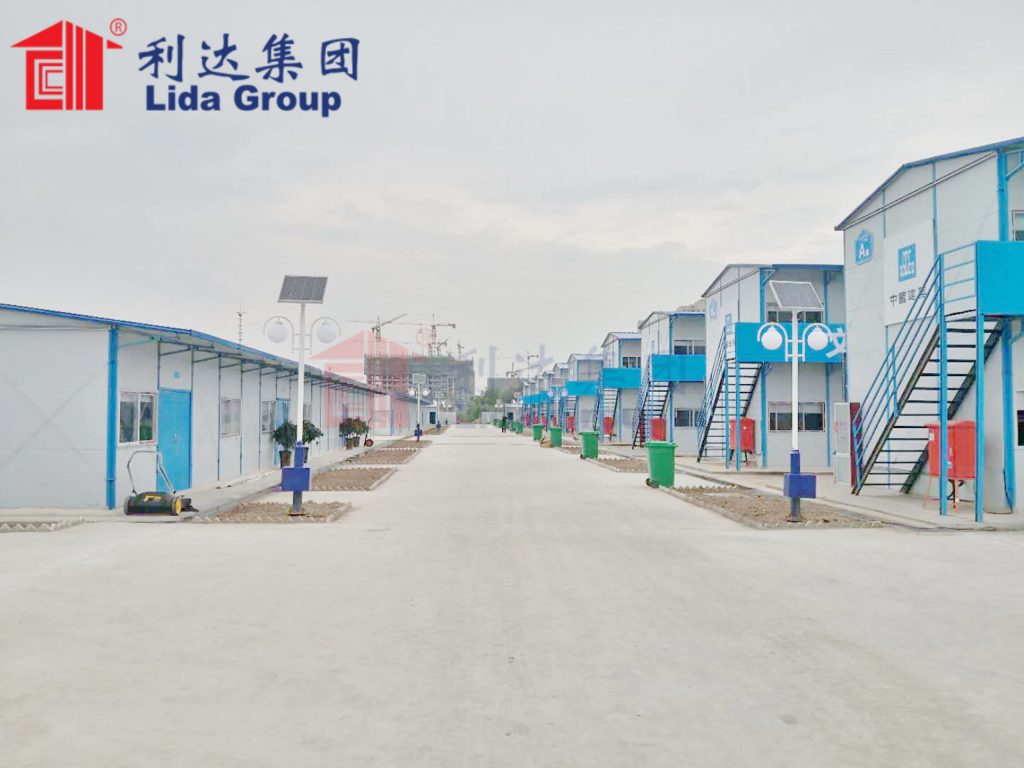
Disconnected from Project Operations
Traditional on-site housing operates in isolation from broader project management systems. There is no integration between accommodation data (e.g., energy use, occupancy levels) and project operations (e.g., workforce scheduling, resource allocation), making it difficult to optimize overall project efficiency. For example, occupancy data from dormitories could inform workforce planning, but without smart sensors or connectivity, this data is not collected or analyzed.
These limitations create a clear need for a new approach to on-site accommodation—one that leverages smart technology to address inefficiencies, enhance safety, and improve the worker experience. Lida Group’s smart prefab dormitories and mobile units meet this need head-on.
Key Smart Technologies in Lida’s Prefab Dormitories and Mobile Units
Lida Group’s smart accommodation solutions integrate a suite of interconnected technologies that work together to create intelligent, adaptive living environments. These technologies are embedded into the design of prefab dormitories and mobile units during manufacturing, ensuring seamless integration and reliable performance—even in remote, harsh environments.
1. Internet of Things (IoT) Sensors: The Foundation of Smart Accommodation
At the core of Lida’s smart housing are IoT sensors—small, connected devices that collect real-time data on everything from occupancy and temperature to energy use and structural integrity. These sensors are strategically placed throughout the units:
- Occupancy Sensors: Detect when a room or common area is occupied, triggering adjustments to lighting, heating, and cooling.
- Temperature and Humidity Sensors: Monitor indoor and outdoor conditions to optimize climate control and prevent mold growth.
- Energy Sensors: Track electricity, water, and gas usage at the unit and individual appliance level.
- Structural Sensors: Measure vibrations, stress, and corrosion in the building’s frame and panels, detecting potential structural issues early.
- Safety Sensors: Include smoke detectors, carbon monoxide alarms, and water leak sensors that send instant alerts when threats are detected.
The data collected by these sensors is transmitted to a central cloud platform, where it is analyzed and used to drive automated actions or inform decision-making.
2. AI-Powered Automation: Adaptive, Efficient Operations
Lida’s smart accommodation uses artificial intelligence (AI) to analyze sensor data and automate key functions—eliminating the need for manual control and optimizing efficiency. The AI system learns from patterns in usage, weather, and worker behavior, making adjustments in real time to enhance comfort and reduce waste.
Smart Climate Control
The AI-powered HVAC system uses data from temperature, humidity, and occupancy sensors to adjust heating and cooling automatically. For example:
- If a room is unoccupied for more than 15 minutes, the system reduces the temperature (in winter) or increases it (in summer) to save energy.
- On hot, sunny days, the system increases air conditioning output in rooms with direct sunlight, while reducing it in shaded areas.
- Workers can set preferred temperatures via a mobile app, and the AI learns these preferences to anticipate needs.
This automation reduces energy use by 30–40% compared to traditional HVAC systems, while maintaining a consistent, comfortable environment.
Intelligent Lighting
AI-powered lighting systems use occupancy sensors and natural light data to adjust brightness automatically. Lights dim when natural light is abundant, turn off in unoccupied rooms, and can be customized to match worker preferences (e.g., warm light for bedrooms, cool light for common areas). Some units also include circadian rhythm lighting, which adjusts color temperature throughout the day to promote better sleep and alertness.
Water Management
Smart water systems use flow sensors to detect leaks and reduce waste. For example:
- Low-flow showers and toilets are equipped with sensors that limit water flow to pre-set levels, reducing usage by 30%.
- Leak detectors in pipes and fixtures send instant alerts to maintenance teams, preventing water damage and waste.
- The AI system analyzes water usage patterns to identify inefficiencies, such as overuse of laundry facilities, and suggests adjustments.

3. Mobile App Integration: Control and Convenience for Workers
Lida’s smart accommodation is connected to a user-friendly mobile app that puts control in the hands of workers. The app offers a range of features designed to enhance convenience and personalization:
- Room Control: Adjust lighting, temperature, and ventilation remotely—ideal for workers returning from a shift who want to pre-cool or pre-heat their rooms.
- Amenity Booking: Reserve shared facilities such as kitchens, laundry machines, or recreational areas in advance, reducing conflicts and wait times.
- Maintenance Requests: Submit photos and descriptions of maintenance issues directly through the app, with real-time updates on repair status.
- Communication: Receive alerts about safety notices, meal times, or project updates from site management.
- Feedback: Provide input on accommodation comfort, amenity usage, or technology performance—helping Lida refine its solutions.
The app also gives workers access to their personal energy and water usage data, encouraging more sustainable habits.
4. Smart Safety and Security Systems
Lida’s smart accommodation prioritizes worker safety with interconnected security technologies that provide real-time monitoring and rapid response:
- Fire and Gas Detection: Smoke and carbon monoxide sensors send instant alerts to the mobile app, on-site security, and off-site managers. In the event of a fire, the system automatically unlocks emergency exits and activates evacuation lights.
- Access Control: Keyless entry via the mobile app or keycards replaces traditional locks, allowing site managers to monitor access and revoke permissions remotely if needed.
- CCTV Integration: Cameras in common areas are connected to the cloud platform, with AI-powered motion detection that alerts security to unusual activity.
- Emergency Response: Each unit is equipped with an emergency button that, when pressed, sends a distress signal to site management and displays the worker’s location.
5. Data Analytics and Reporting: Driving Operational Efficiency
The cloud platform that powers Lida’s smart accommodation collects and analyzes data from all connected devices, generating insights that help companies optimize operations. Key reports include:
- Energy and Water Usage: Identify trends and inefficiencies, such as high energy use in specific units or peak water usage times.
- Occupancy Levels: Track how many workers are using the accommodation, informing workforce planning and resource allocation.
- Maintenance Trends: Identify recurring issues (e.g., frequent HVAC breakdowns) and address root causes, reducing repair costs.
- Worker Feedback: Analyze input from the mobile app to improve amenities and services.
Site managers can access these reports in real time via a web dashboard, making data-driven decisions to reduce costs and enhance worker satisfaction.
6. Renewable Energy Integration: Sustainable Smart Living
Lida’s smart accommodation is designed to work seamlessly with renewable energy sources, further reducing environmental impact and operational costs. Solar panels on the roof of dormitories or mobile units generate electricity, which is stored in batteries and used to power smart systems. The AI system optimizes the use of solar energy, prioritizing it for lighting and low-power devices before switching to grid or generator power.
In remote sites with no grid access, Lida’s smart units can operate entirely on solar power, with the AI system managing energy storage and usage to ensure reliability.
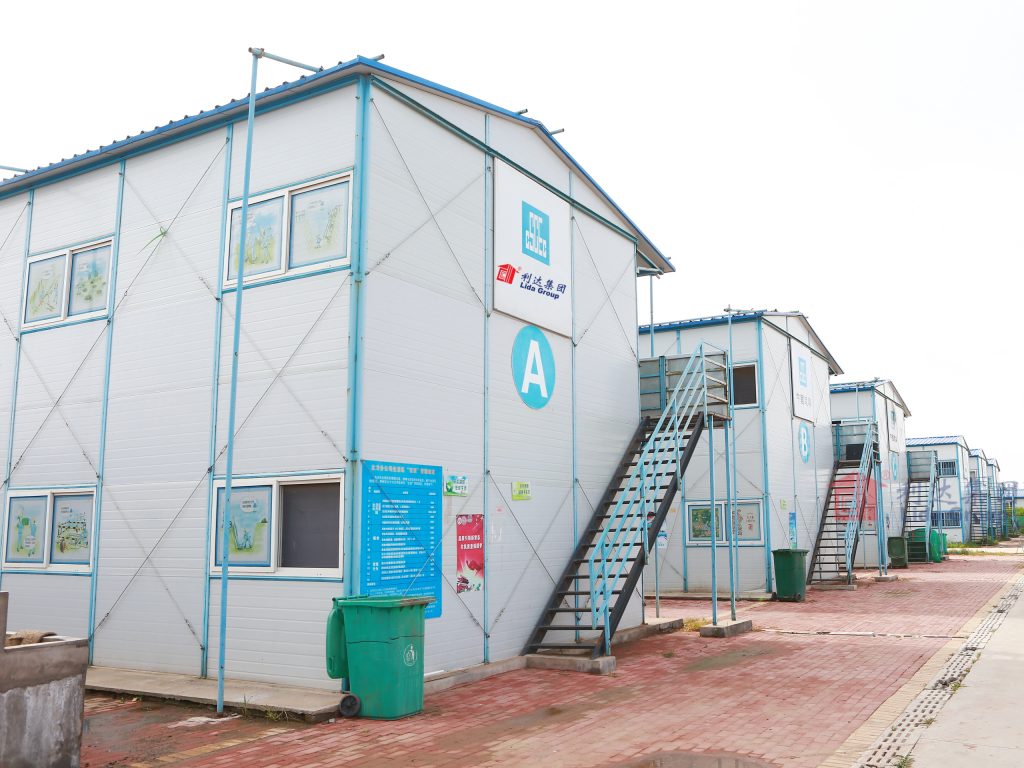
Real-World Applications: Smart Accommodation in Action
The effectiveness of Lida’s smart prefab dormitories and mobile units is proven in real-world projects across diverse industries and environments. These case studies demonstrate the tangible benefits of smart technology for both workers and companies.
Case Study 1: Construction Project in the Netherlands
A large construction company was building a residential complex in the Netherlands, requiring accommodation for 120 workers for 18 months. The company wanted to reduce energy costs and improve worker retention, which had been a challenge with traditional non-smart dormitories. It chose Lida’s smart prefab dormitories, equipped with IoT sensors, AI climate control, and a mobile app.
Outcomes:
- Energy Savings: The AI-powered HVAC and lighting systems reduced energy use by 38% compared to the company’s previous non-smart accommodation, saving $24,000 over the project duration.
- Maintenance Efficiency: Reactive maintenance requests dropped by 50% due to early detection of issues via IoT sensors. For example, a small water leak in a bathroom was detected by flow sensors and repaired before causing damage, saving $5,000 in potential repairs.
- Worker Retention: Turnover fell by 22%, with workers citing the convenience of the mobile app and personalized climate control as key factors.
The company also used occupancy data from the smart system to adjust workforce scheduling, ensuring accommodation was used efficiently.
Case Study 2: Mining Project in Australia
A mining company operating a remote gold mine in Western Australia needed accommodation for 180 workers. The site had limited water and electricity access, and safety was a top priority due to the remote location. Lida supplied smart mobile units with solar integration, IoT safety sensors, and a mobile app.
Outcomes:
- Sustainable Operations: Solar panels and AI energy management reduced the mine’s reliance on diesel generators by 45%, saving $60,000 in fuel costs annually.
- Safety Improvements: A carbon monoxide leak in one unit was detected by sensors, and alerts were sent to on-site safety teams and workers’ mobile apps. The unit was evacuated quickly, and no injuries occurred. The company reported a 30% reduction in safety incidents related to accommodation.
- Water Efficiency: Smart water sensors and low-flow fixtures reduced water usage by 35%, critical for the water-scarce site.
Workers also praised the ability to book laundry facilities via the app, reducing wait times and frustration.
Case Study 3: Renewable Energy Project in the United States
A wind farm developer needed temporary accommodation for 80 workers during the construction of a wind farm in Texas. The developer wanted to demonstrate its commitment to sustainability and use data to optimize project operations. It selected Lida’s smart prefab dormitories with solar power, data analytics, and a web dashboard for managers.
Outcomes:
- Sustainability Metrics: The smart system tracked energy and water usage, allowing the developer to report a 42% reduction in carbon emissions from accommodation compared to industry averages. This helped the project qualify for green energy incentives.
- Operational Optimization: Occupancy data showed that worker numbers peaked mid-week, so the developer adjusted meal services and transportation to match, reducing waste by 25%.
- Worker Satisfaction: A survey found that 90% of workers were satisfied with the smart accommodation, citing the convenience of remote room control and maintenance requests.
The developer extended its contract with Lida for a second wind farm project, citing the smart technology’s impact on efficiency and sustainability.
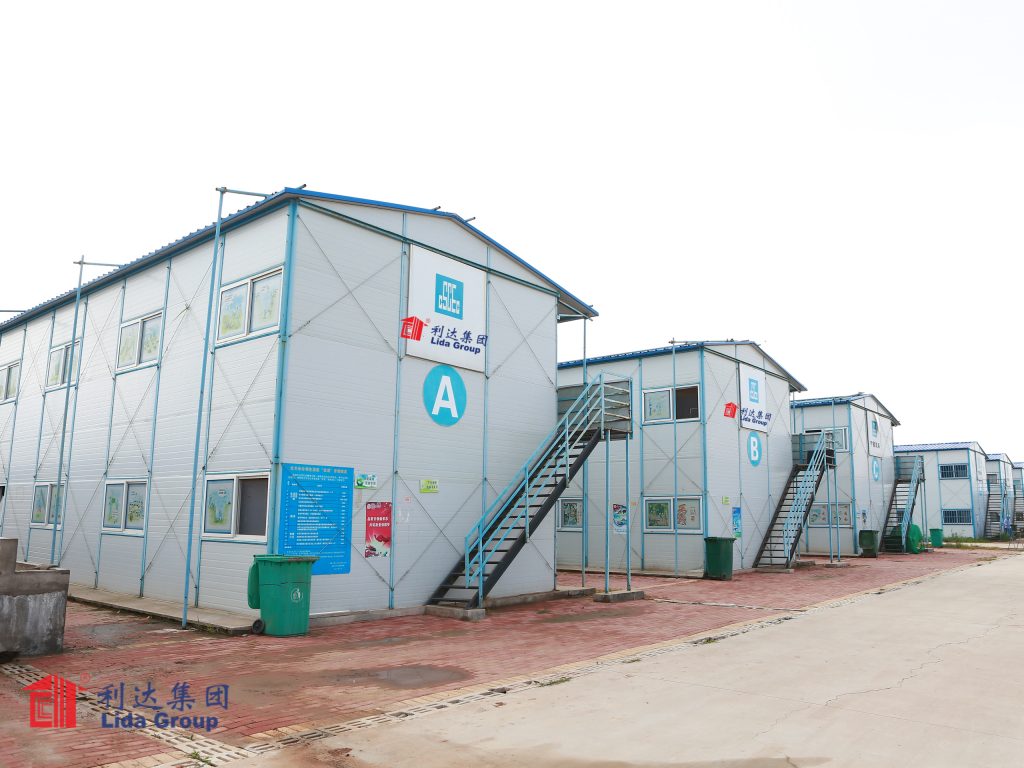
Competitive Advantage: Why Lida’s Smart Accommodation Leads the Market
In a growing market for smart on-site accommodation, Lida Group stands out due to its holistic, integrated approach to smart technology. Unlike competitors who add smart features as afterthoughts, Lida designs its prefab dormitories and mobile units around smart systems—ensuring seamless integration, reliability, and maximum value.
End-to-End Integration vs. Patchwork Solutions
Many competitors offer “smart” accommodation by adding standalone IoT devices (e.g., smart thermostats) to traditional prefab units. These patchwork solutions often lack connectivity, leading to inefficiencies and user frustration. Lida’s smart technology is fully integrated during manufacturing: sensors, AI systems, and the mobile app work together as a single ecosystem, with no compatibility issues.
For example, Lida’s occupancy sensors automatically communicate with lighting and HVAC systems, while competitor solutions may require separate apps or manual adjustments. This integration reduces complexity for workers and managers, ensuring the technology delivers on its promise.
Ruggedized Technology for Harsh Environments
Remote construction and mining sites expose accommodation to extreme conditions—dust, moisture, high temperatures, and vibrations—that can damage delicate smart devices. Lida’s IoT sensors and smart systems are ruggedized to withstand these environments:
- Sensors are sealed to prevent dust and water infiltration, meeting IP67 standards (dust-tight and waterproof up to 1 meter).
- Electronics are designed to operate in temperatures ranging from -40°C to 50°C.
- Wiring and connectors are reinforced to resist vibration and corrosion.
Competitors’ smart devices often use consumer-grade components that fail in harsh conditions, leading to downtime and lost data.
User-Centric Design
Lida’s smart technology is designed with workers in mind, not just managers. The mobile app features a simple, intuitive interface that requires minimal training, and amenities are tailored to on-site needs (e.g., amenity booking, emergency alerts). Competitors’ apps often focus on data collection for managers, neglecting worker convenience and leading to low adoption rates.
Lida also involves workers in the design process, testing smart features with on-site teams to ensure they solve real problems. This user-centric approach has resulted in high app adoption rates (typically 90% or higher), ensuring the technology delivers maximum benefits.
Scalability and Customization
Lida’s smart accommodation solutions are scalable, adapting to projects of all sizes—from 20-worker construction sites to 200-worker mining camps. The modular design allows additional smart units to be added as workforce sizes grow, with no disruption to existing systems.
Lida also customizes smart features to meet site-specific needs:
- Remote sites may get enhanced solar integration and satellite connectivity.
- High-safety environments (e.g., oil and gas sites) may get additional gas detection sensors and emergency response systems.
Competitors often offer one-size-fits-all smart solutions, which fail to address the unique challenges of different projects.
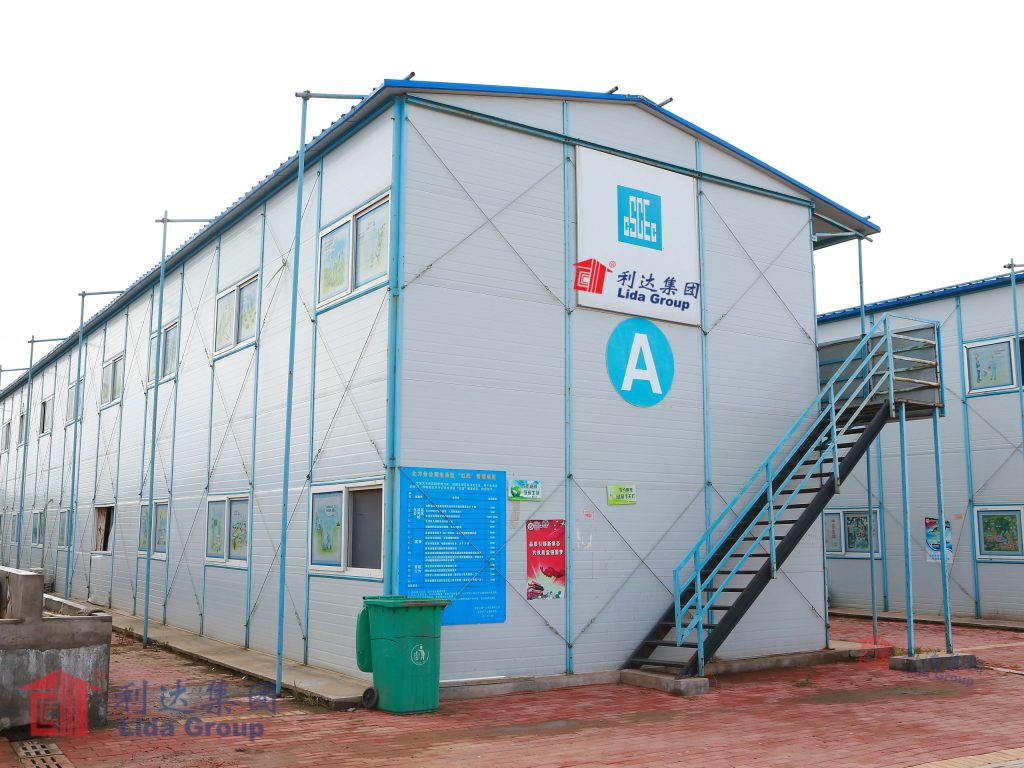
The Future of Smart On-Site Accommodation: Lida’s Innovation Roadmap
Lida Group is not content with current smart technology—its innovation roadmap focuses on advancing smart accommodation to deliver even greater benefits for workers and companies. Key future developments include:
1. 5G and Edge Computing: Faster, More Reliable Connectivity
Lida is integrating 5G technology into its smart units to enable faster data transmission and lower latency. This will improve the performance of real-time systems such as AI climate control and video security. The company is also exploring edge computing—processing data locally on the unit rather than in the cloud—which will reduce reliance on internet connectivity and ensure smart systems work even in remote areas with poor network access.
2. Predictive Maintenance with Machine Learning
Building on its current IoT sensor data, Lida is developing machine learning algorithms that can predict maintenance issues before they occur. For example, the system will analyze HVAC performance data to identify when a component is likely to fail, allowing maintenance teams to replace it proactively. This will reduce downtime by 60% and extend the lifespan of equipment.
3. Biometric Integration for Personalization and Security
Future smart units will include
biometric technology to enhance both personalization and security. This includes:
- Facial Recognition: For keyless entry to units and shared amenities, eliminating the need for keycards or passwords that can be lost or shared. Facial recognition systems will also automatically adjust room settings (temperature, lighting, preferred entertainment) based on the worker’s identity.
- Voice Recognition: Integrated with smart home controls, allowing workers to adjust amenities using natural language commands (e.g., “Hey Lida, turn on the kitchen lights” or “Set my room temperature to 21°C”).
- Health Monitoring: Optional biometric sensors (e.g., in mattresses or wearables connected to the system) that track sleep quality, heart rate, and stress levels. The system will provide personalized recommendations for improving well-being (e.g., adjusting room temperature for better sleep) and alert on-site medical teams to potential health issues.
This biometric integration will create a more seamless, personalized experience while enhancing security by ensuring only authorized personnel can access accommodation areas.
4. Virtual and Augmented Reality (VR/AR) Enhancements
Lida is exploring VR/AR technology to address the isolation often associated with remote on-site work and improve training and maintenance processes:
- VR Social Spaces: Virtual lounges where workers can “meet” with colleagues or family members in a 3D environment, simulating in-person interactions. This will reduce feelings of loneliness and improve mental health.
- AR Maintenance Guides: Augmented reality overlays that provide step-by-step instructions for minor maintenance tasks (e.g., replacing a light bulb or unclogging a drain) when workers scan the area with their mobile app. This will reduce reliance on maintenance teams and minimize downtime.
- VR Safety Training: Virtual reality modules that simulate emergency scenarios (e.g., fires, gas leaks) for worker training, providing a realistic, low-risk way to practice response protocols.
5. Circular Economy and Smart Resource Management
To align with global sustainability goals, Lida is integrating smart technology to support circular economy principles in on-site accommodation:
- Material Tracking Sensors: RFID tags embedded in building components (e.g., sandwich panels, fixtures) that track their lifecycle, from manufacturing to reuse or recycling. This data will help Lida and its clients optimize material use and reduce waste.
- Smart Recycling Stations: In common areas, interactive recycling stations that use sensors to identify waste types (e.g., plastic, metal, paper) and guide workers to the correct bin. The system will track recycling rates and provide feedback to encourage participation.
- Shared Resource Optimization: AI algorithms that manage shared amenities (e.g., tools, kitchen equipment) to maximize usage and reduce the need for duplicate items. For example, the system will track tool availability and suggest shared use among teams.
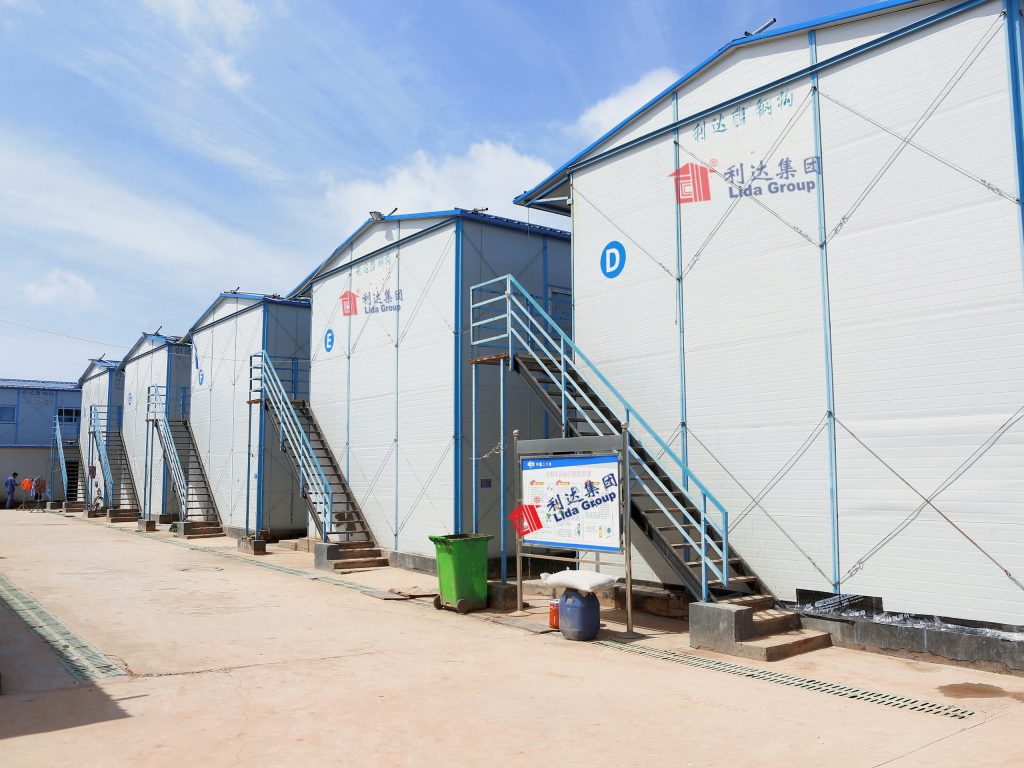
Conclusion
Lida Group is redefining the future of on-site accommodation by integrating smart technology into its prefab worker’s dormitories and mobile units—transforming static, inefficient housing into intelligent, adaptive environments that prioritize worker comfort, operational efficiency, safety, and sustainability. By addressing the limitations of traditional non-smart accommodation—from resource waste and reactive maintenance to poor worker experience—Lida’s smart solutions deliver tangible benefits for both workers and companies.
The company’s success stems from its holistic approach: smart technology is not an afterthought but a core component of the design, with IoT sensors, AI automation, mobile app integration, and renewable energy systems working together as a seamless ecosystem. Real-world case studies from the Netherlands, Australia, and the United States demonstrate that these innovations reduce costs, improve safety, boost worker retention, and support sustainability goals.
Lida’s competitive edge lies in its commitment to end-to-end integration, ruggedized technology for harsh environments, user-centric design, and scalability. Unlike competitors who offer patchwork smart solutions, Lida delivers fully integrated systems that are reliable, easy to use, and tailored to the unique needs of each project.
Looking ahead, Lida’s innovation roadmap—including 5G connectivity, biometric integration, VR/AR enhancements, and circular economy tools—promises to push the boundaries of smart on-site accommodation even further. These advancements will not only enhance the worker experience but also drive greater efficiency, sustainability, and safety for companies operating in construction, mining, and renewable energy.
In an industry where on-site accommodation is no longer just a functional necessity but a strategic asset, Lida Group is leading the way. By leveraging smart technology, Lida is not just building better housing—it is shaping a future where on-site living is comfortable, connected, and sustainable. For companies seeking to attract and retain talent, reduce costs, and meet sustainability targets, Lida’s smart prefab dormitories and mobile units represent the future of on-site accommodation.

Related news
-
Cost-Effective Workforce Housing: Lida Group's Temporary Sandwich Panel House Cuts Construction Time and Operational Budgets
2025-09-05 17:33:02
-
Lida Group Integrates Modern Amenities into Its High-Quality Mobile Building Designs for Superior Worker Comfort
2025-09-08 16:20:25
-
Engineered for Extreme Conditions: Lida Group's Prefab Worker's Dormitory Withstands Harsh Weather with Sandwich Panel Walls
2025-09-05 13:58:56
contact us
- Tel: +86-532-88966982
- Whatsapp: +86-13793209022
- E-mail: sales@lidajituan.com


